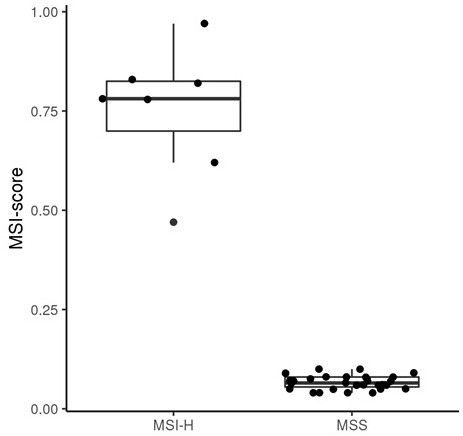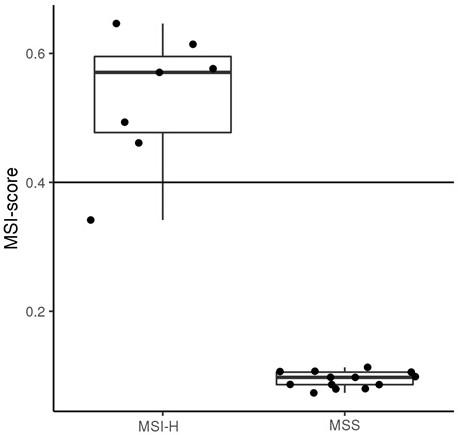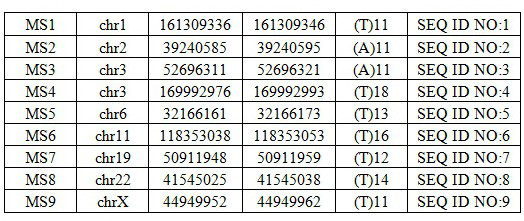Tumor-related microsatellite instability site combination and application thereof
A technology of microsatellite instability and microsatellite loci, applied in the field of microsatellite instability locus combination, can solve the problems of inconsistent antibodies and inconsistent reading standards of pathologists, so as to reduce the detection cost and reduce the combination of MS loci. , the effect of low cost
- Summary
- Abstract
- Description
- Claims
- Application Information
AI Technical Summary
Problems solved by technology
Method used
Image
Examples
Embodiment 1
[0027] Example 1 Obtaining combination of tumor-associated microsatellite instability sites
[0028] Include the following steps:
[0029] 1. Scan 2,952,815 MS sites with a repeat unit of 1-5 bases and a repeat length of 10-100 bases available on the human reference genome.
[0030] 2. Since the use of single-base repeat MS sites has higher sensitivity than the use of poly-base repeat MS sites, 2263 single-base repeat MS sites in step 1 were screened out.
[0031] 3. Select 363 MS sites covered by the panel for detecting cancer driver mutations and drug target mutations.
[0032] 4. In the training set samples of 28 cases of primary colorectal cancer (7 cases of microsatellite instability (MSI-H), 21 cases of microsatellite stable (MSS)), use MANTIS software to calculate 363 MS bits in step 3 The MSI of the points is scored MSI-score; the calculation method of MSI-score is to determine the stability of 363 sites in each sample, and calculate the proportion of unstable sites ...
Embodiment 2
[0038] Example 2 The application of the site combination of tumor-related microsatellite instability
[0039] Using the MSI-PCR results as the gold standard, the performance of using the 9 sites in Table 1 to determine MS status was evaluated.
[0040] 1. DNA was extracted from tumor tissues and paracancerous tissues of 36 patients with primary colorectal cancer (7 cases of MSI, 29 cases of MSS):
[0041] 1) Take a mung bean-sized fresh tissue, cut it into pieces with a disposable blade and add it to a centrifuge tube;
[0042] 2) Add proteinase K and lysate to the tube respectively, incubate overnight at 56°C until the sample is completely lysed;
[0043] 3) Add buffer solution and absolute ethanol and mix well, transfer to the adsorption column, add rinse solution, centrifuge, discard the waste solution, and elute the salt;
[0044] 4) Transfer the adsorption column to a new collection tube, add eluent, and collect the DNA.
[0045] 2. Use a 2.2M panel containing 9 MS sites...
PUM
 Login to View More
Login to View More Abstract
Description
Claims
Application Information
 Login to View More
Login to View More - R&D Engineer
- R&D Manager
- IP Professional
- Industry Leading Data Capabilities
- Powerful AI technology
- Patent DNA Extraction
Browse by: Latest US Patents, China's latest patents, Technical Efficacy Thesaurus, Application Domain, Technology Topic, Popular Technical Reports.
© 2024 PatSnap. All rights reserved.Legal|Privacy policy|Modern Slavery Act Transparency Statement|Sitemap|About US| Contact US: help@patsnap.com










